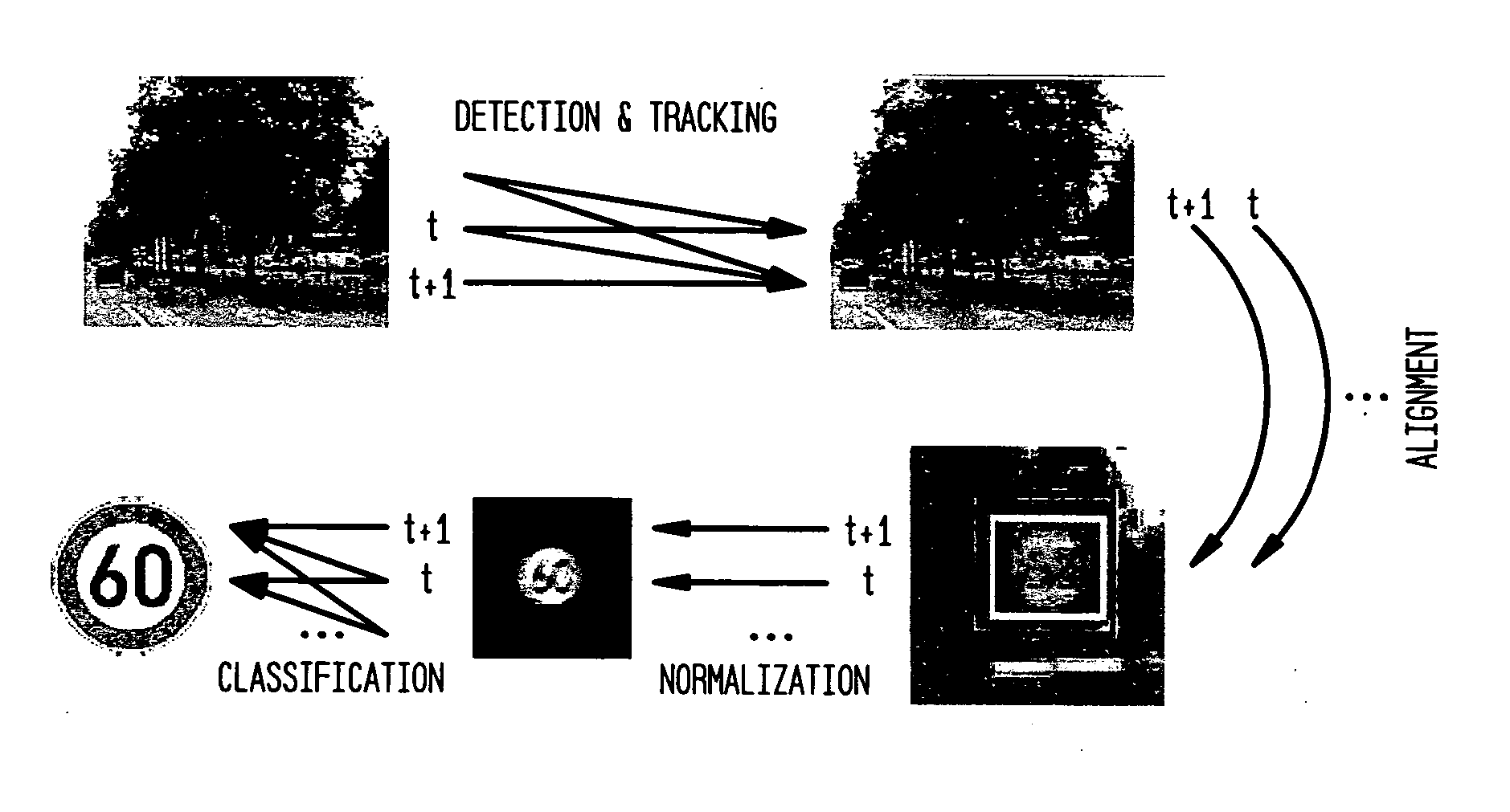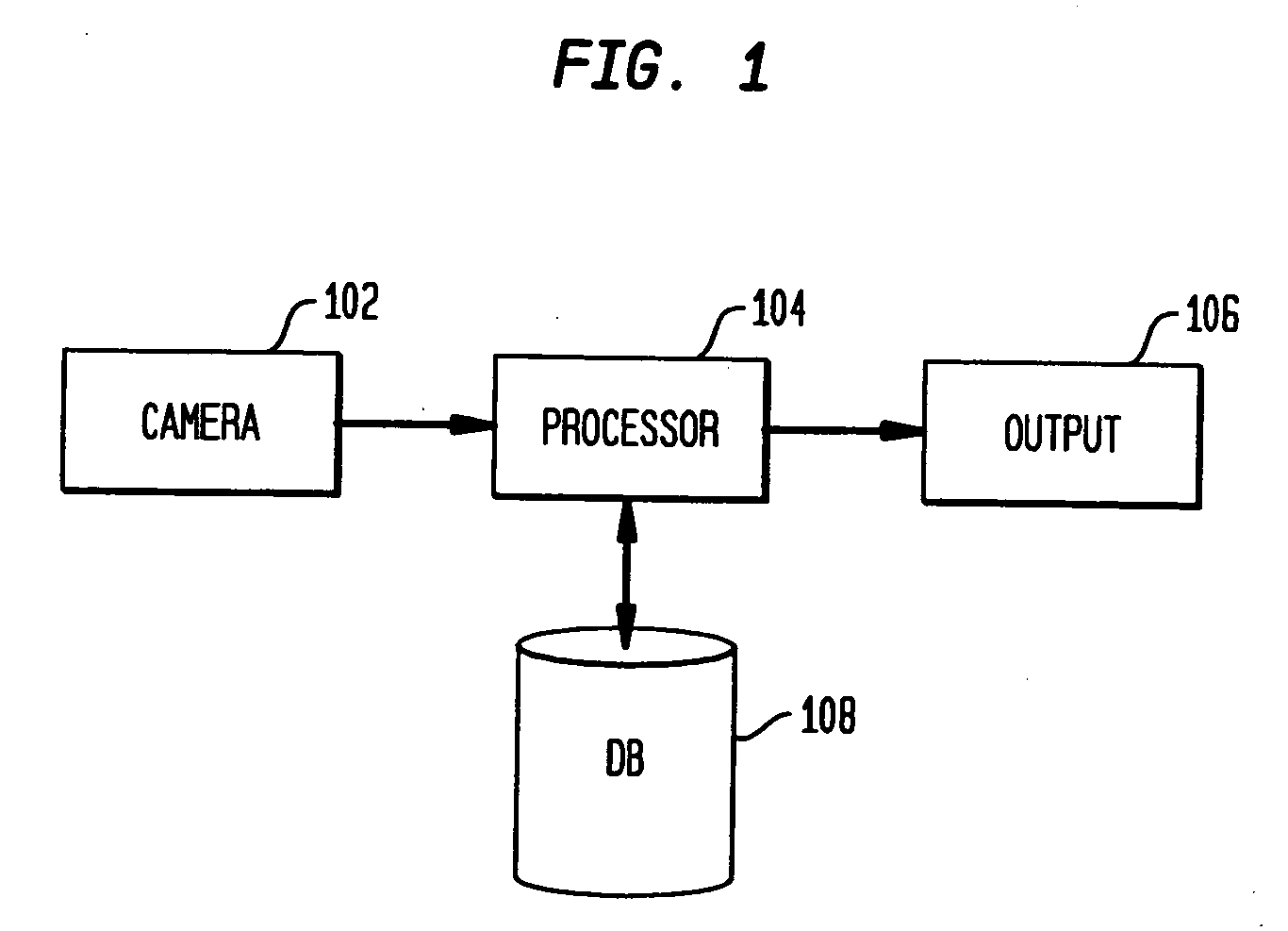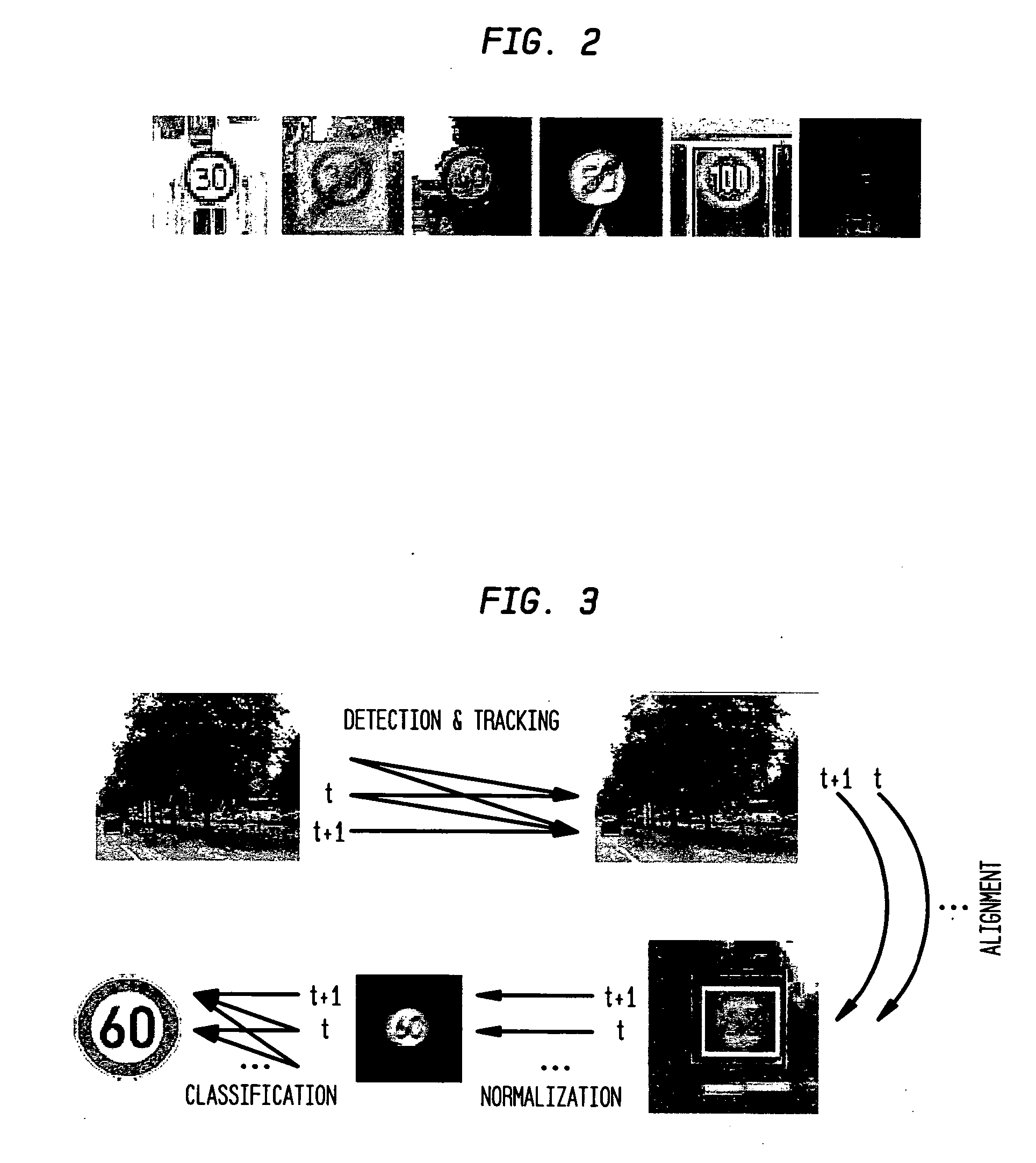Method for traffic sign detection
a technology of traffic signs and detection methods, applied in the detection of traffic movement, instruments, computing, etc., can solve the problems of additional image distortion, small object variation, and diminishing the advantage, and achieve the effect of robust detection
- Summary
- Abstract
- Description
- Claims
- Application Information
AI Technical Summary
Benefits of technology
Problems solved by technology
Method used
Image
Examples
Embodiment Construction
[0020] The present invention is directed to a method for detecting and recognizing traffic signs. FIG. I illustrates a block diagram of a system for implementing the present invention. A camera 102 is used to capture images of a road and its surroundings. The camera 102 is typically mounted on a vehicle and pointed in a direction to capture the traffic signs. As would be expected with a typical road image, the image includes background images, such as road, buildings, trees, and houses, and vehicles driving on the road. The images are communicated to a processor 104 which analyzes the image intensity and image motion to detect any change in scene dynamics.
[0021] A sign detection framework is implemented using AdaBoost training to combine filter based features. Detected objects are tracked within a temporal information propagation framework. Next, in order to obtain an accurate normalization, the detected signs are precisely aligned to up to pixel accuracy using a statistical modeli...
PUM
 Login to View More
Login to View More Abstract
Description
Claims
Application Information
 Login to View More
Login to View More - R&D
- Intellectual Property
- Life Sciences
- Materials
- Tech Scout
- Unparalleled Data Quality
- Higher Quality Content
- 60% Fewer Hallucinations
Browse by: Latest US Patents, China's latest patents, Technical Efficacy Thesaurus, Application Domain, Technology Topic, Popular Technical Reports.
© 2025 PatSnap. All rights reserved.Legal|Privacy policy|Modern Slavery Act Transparency Statement|Sitemap|About US| Contact US: help@patsnap.com



